We took a trip to Taiwan and China in June 2019. Like most of our trips, I began writing about it shortly after. However, I got distracted somehow and never gotten around to finish it. Over a year later, picking this project back up is providing me with a nice boost of vacation memories while home-bound under COVID.
Aside from the pandas, Chengdu wasn’t a particularly memorable city to visit. I fully acknowledge that we could have checked out some of the world-class spots in the outskirts, such as Qing Cheng Shan 青城山, Du Jiang Yan 都江堰, Le Shan Giant Buddha 樂山大佛, or E Mei Shan 峨嵋山, instead of staying within the city. It would have been painful to drag little ones to those places, though, so perhaps we could have saved the entire region for a trip a few years later. What’s strange is that despite Chengdu having a long and rich history (much more so than Beijing or Shanghai), not much had been preserved.
Instead of real palaces or historic walls or famous temples, Chengdu’s top tourist attractions were all replicas of historic locations or semi-artificial neighborhoods. A temple for the heroes from the Three Kingdoms Era, an artificial shack of a famous poet, etc.. They aren’t “real” by any common definition of that word, but they do link the city to its cultural heritage, and give people plenty of room for imagination.
We didn’t care for paying an admission to fake temples, but we did spend a lot of time in semi-artificial historic neighborhoods. These places were packed with all sorts of vendors dressed in a way that “sends you back in time”. I suppose that’s what happens when you combine culture and capitalism?
Jin Li 錦里
Jin Li was a themed commercial neighborhood loosely associated with the Romance of the Three Kingdoms. It was a major tourist attraction for street food, so we came here to eat. However, the vibe right from the start wasn’t promising. It was overcrowded to a point where it was hard to move around, with thousands of what I assumed to be domestic tourists rather than locals. Looking for Chengdu street food here seemed similar to finding seafood at Fishermen’s Wharf or hot dog in Times Square… like, it’s okay to do, but probably don’t admit to anyone that you did it.
We ended up just grabbing a few random bites before eating a real dinner outside Jin Li. It was still neat, though, with the picturesque setting, filled with random crafts and performances. Think of it as a much better version of the Chinese corner at Disney World’s Epcot. And no admission was required.
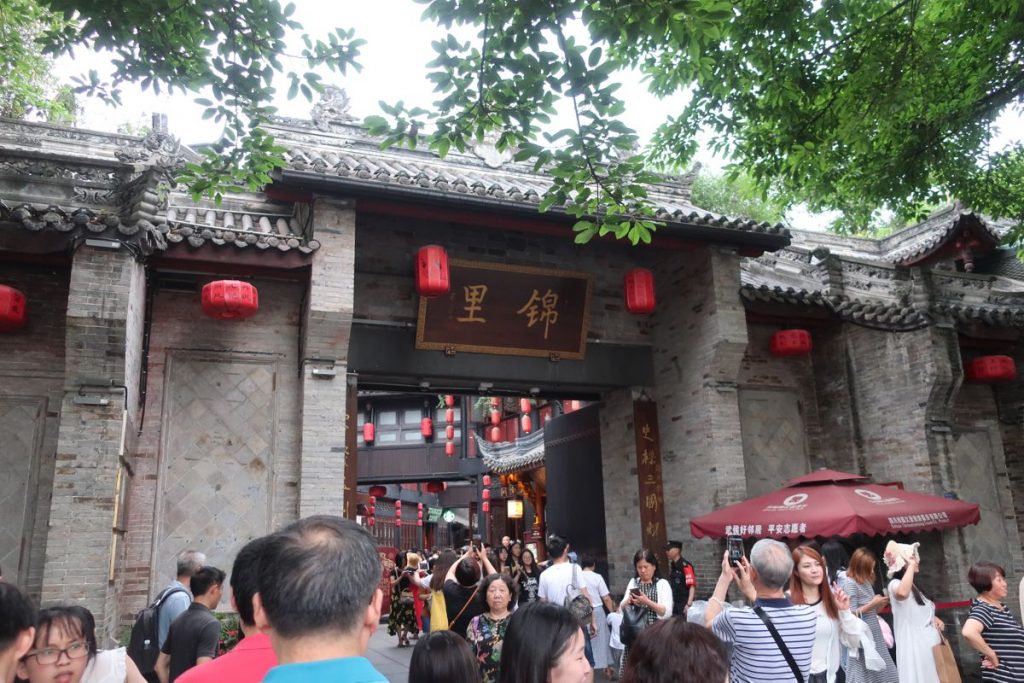
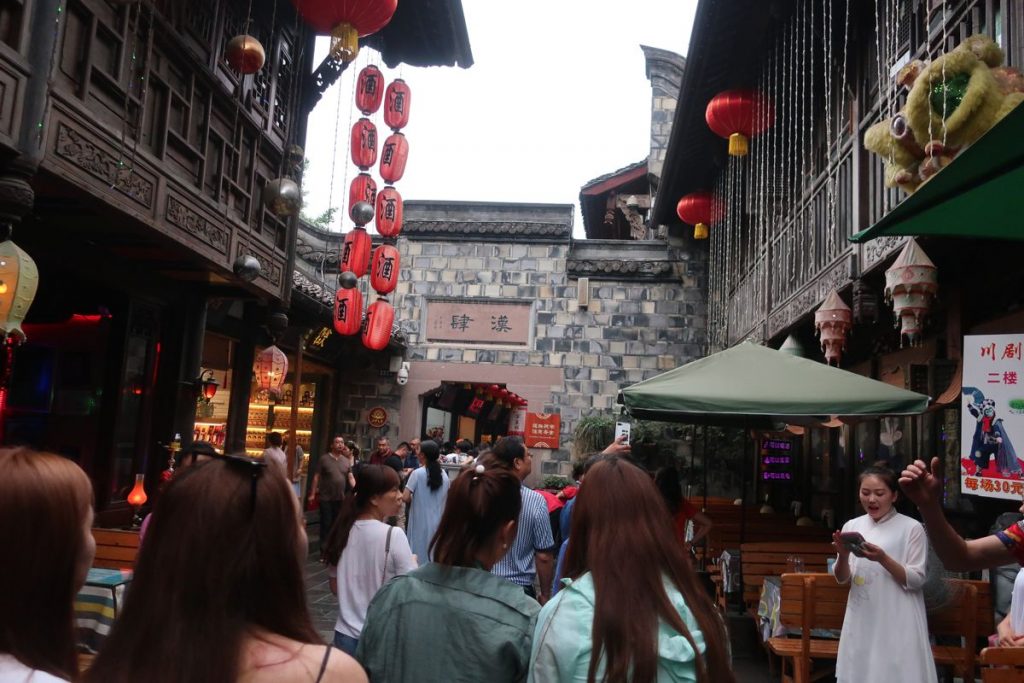
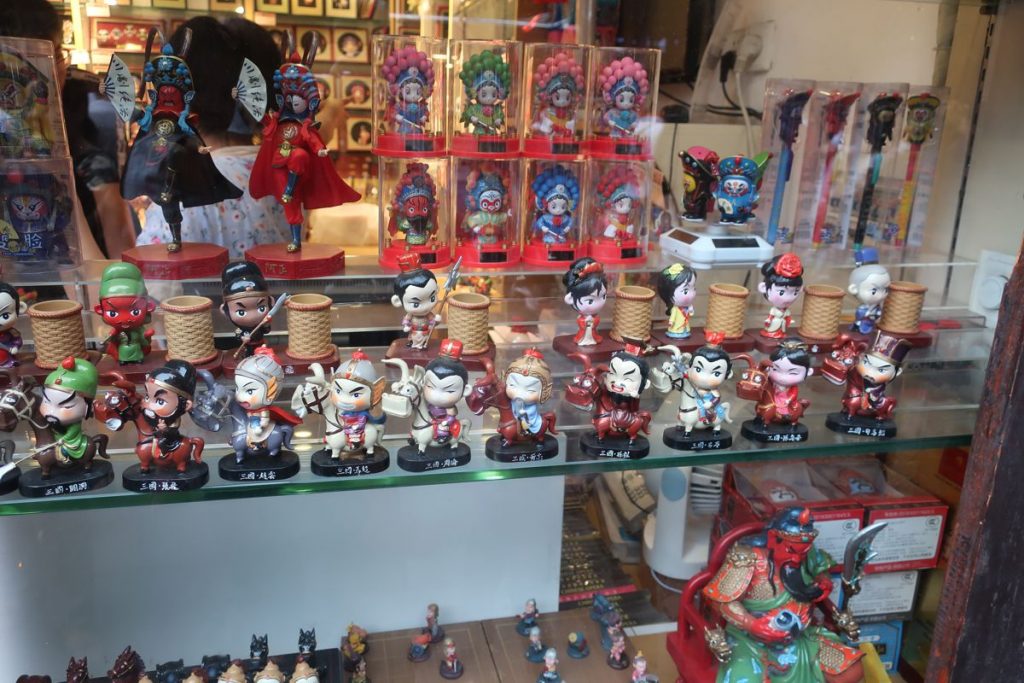
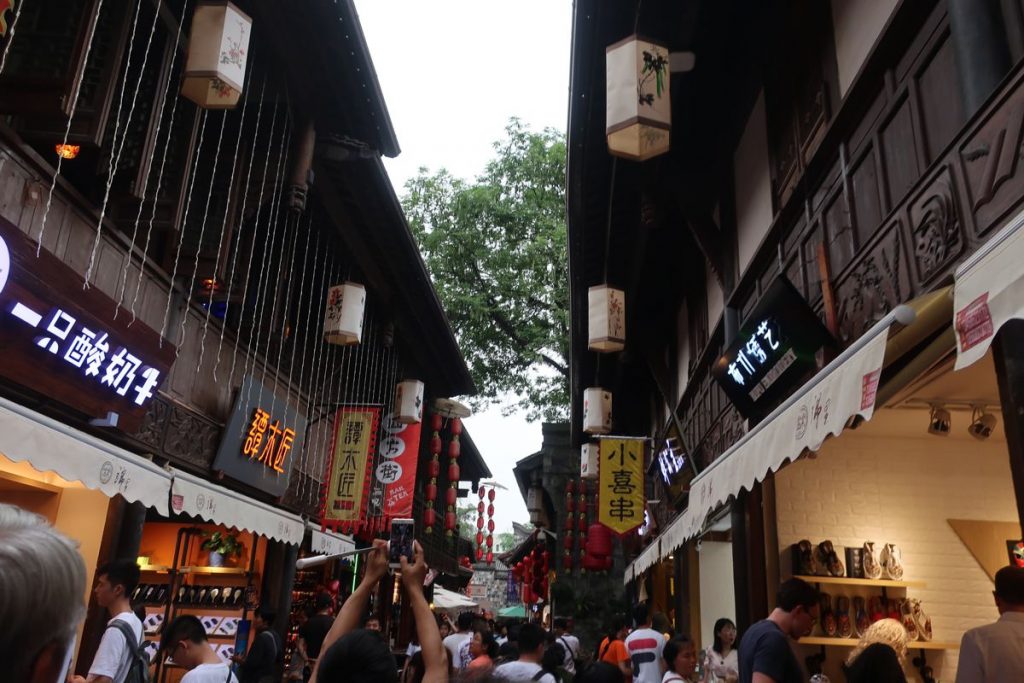
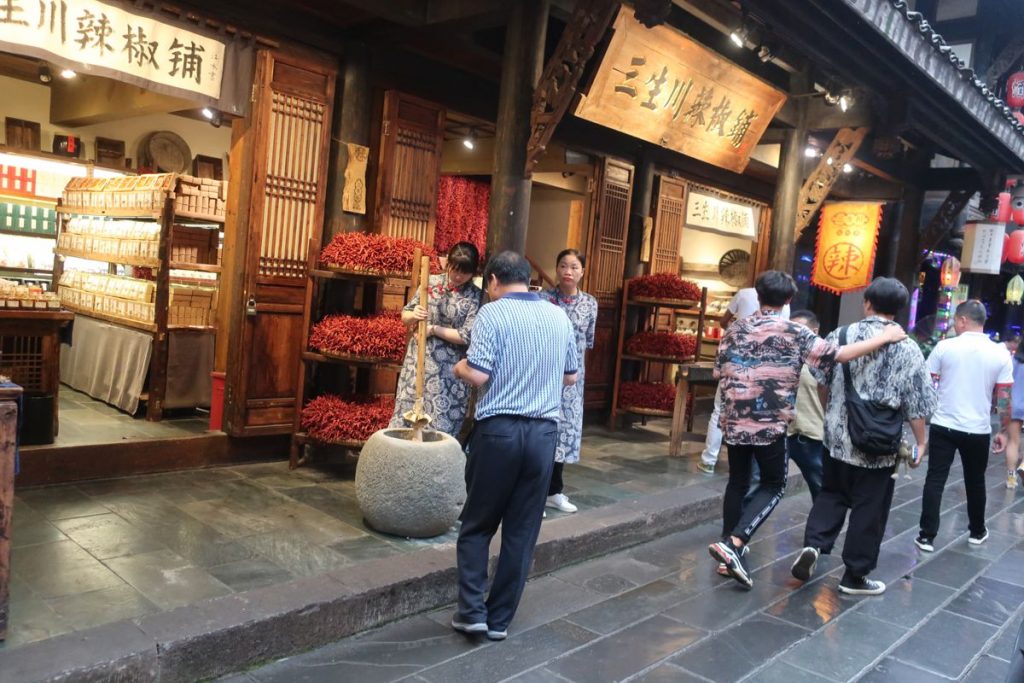
Kuan Zhai Xiang Zi 寬窄巷子
Also known as the “Kuan Alley and Zhai Alley Commercial Street”, the name of this place is literally just a wide and a narrow alley. Spanning 3-4 streets instead of 2, this neighborhood was similar to Jin Li but sported a less ancient architectural style and featured a greater mix of trendy shops.
One thing we did here was visit a dine-in theater. We got a table to ourselves, ordered a few tasty and not overly over-priced dishes, and enjoyed tidbits of Chinese opera performance, including Sichuan’s famous face-changing show 變臉. The kids were fascinated, and we were glad to have done it.
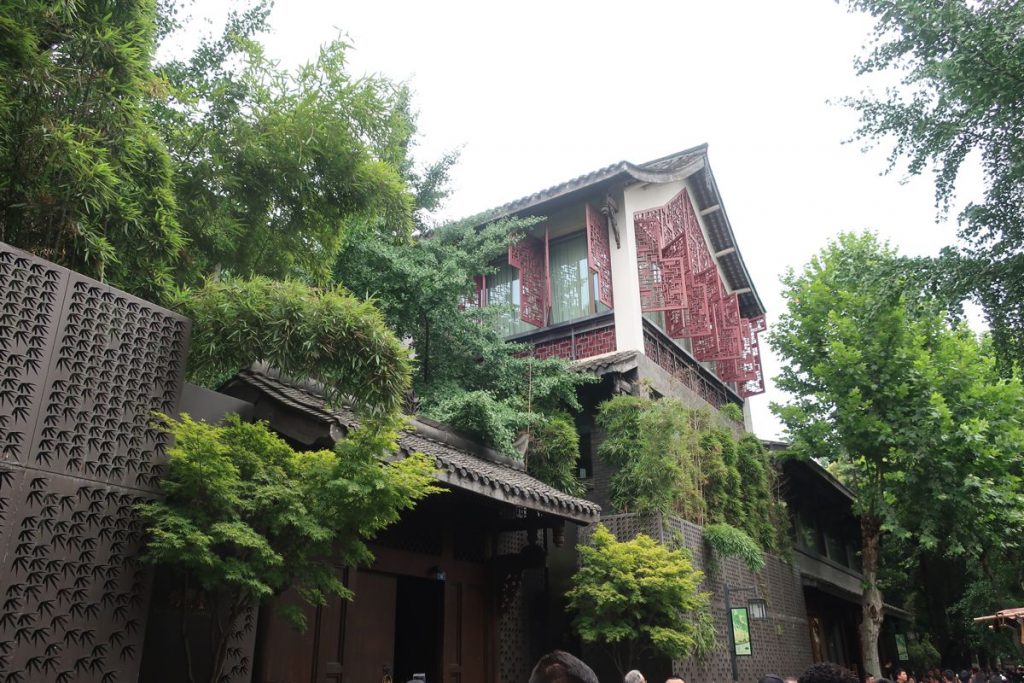
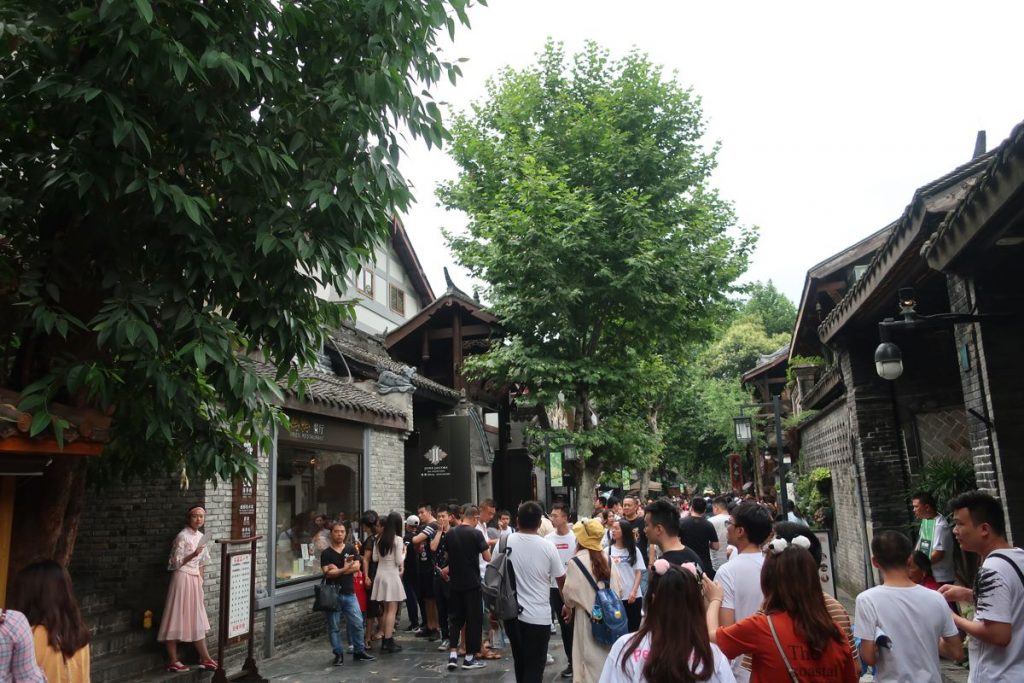
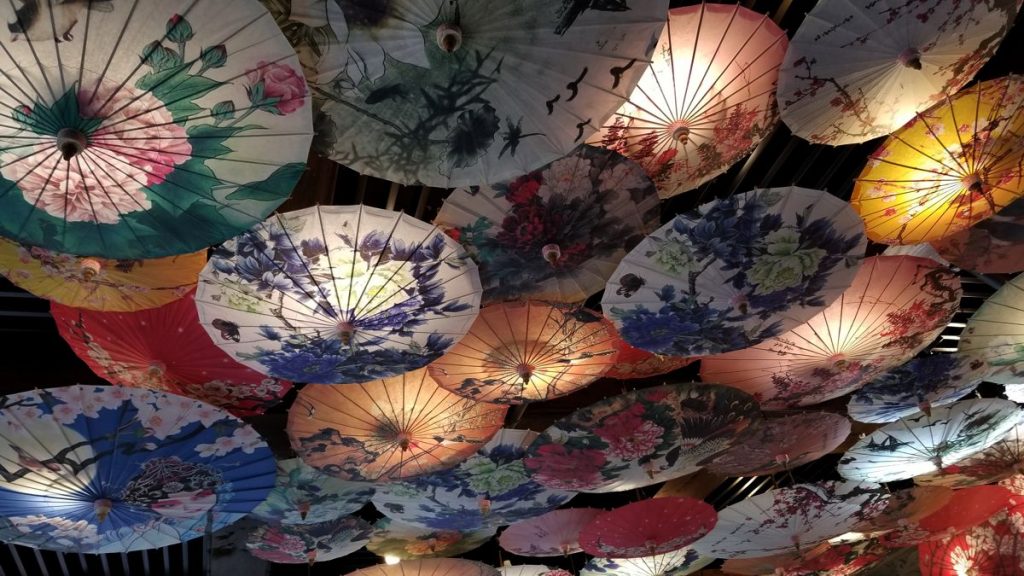
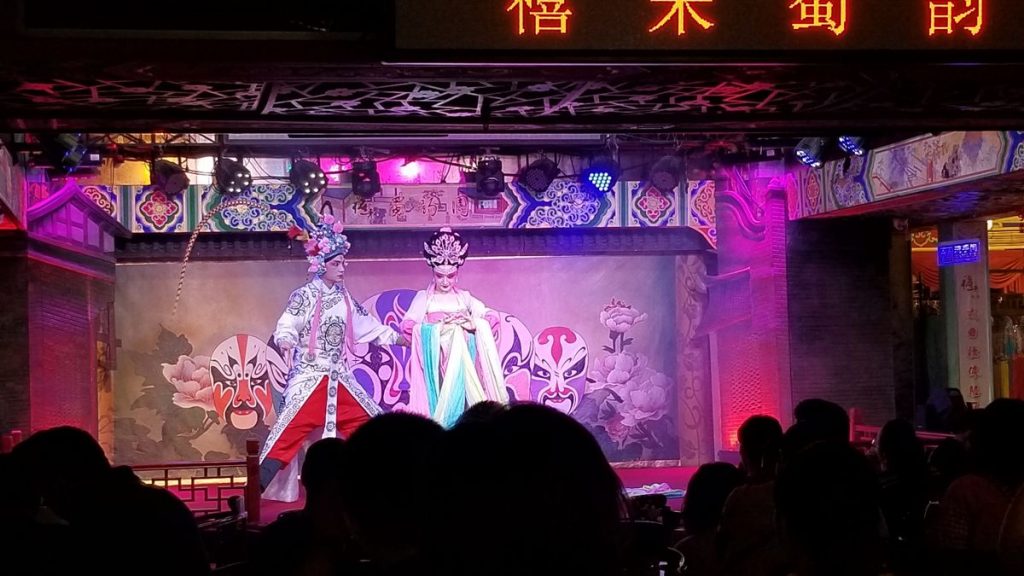
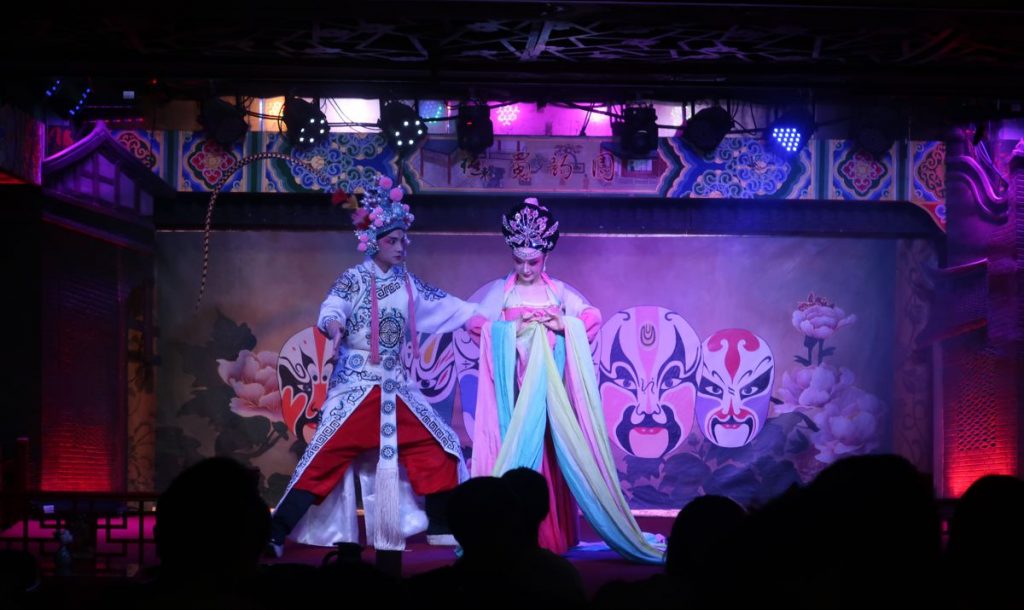
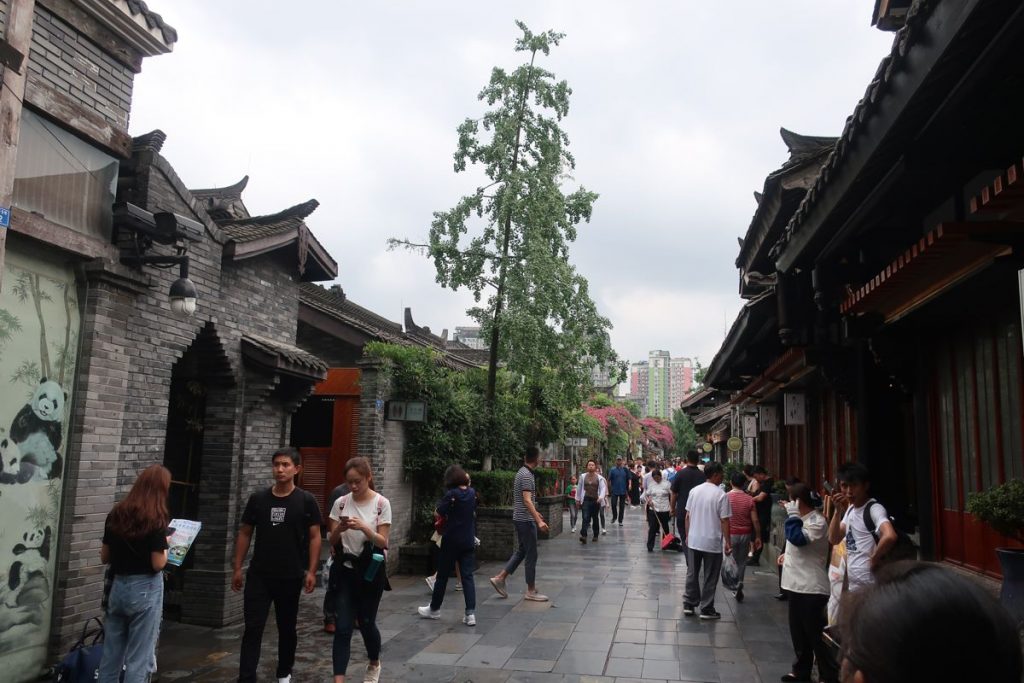
(The neighborhood around) Wenshu Yuan 文殊院
Wenshu Yuan was a religiously significant Buddhist temple with little tourist value. It was on our “whatever list”, and we made a stop only because we were done with Panda Base early and it was on the way back. Walking around the temple was neat, but the neighborhood around it was the real gem.
Much here was similar to the more popular attractions, with restaurants and shops in faux-historic buildings. The lesser fame though meant far fewer tourists. It was nice to stroll leisurely for once. We had some of the most amazing dumplings and noodles at Long Chao Shou 龍抄手, a chain restaurant that we remembered fondly of from 15 years ago. We also had some pretty terrible snacks. Observation? The former was full of local customers and the latter wasn’t.
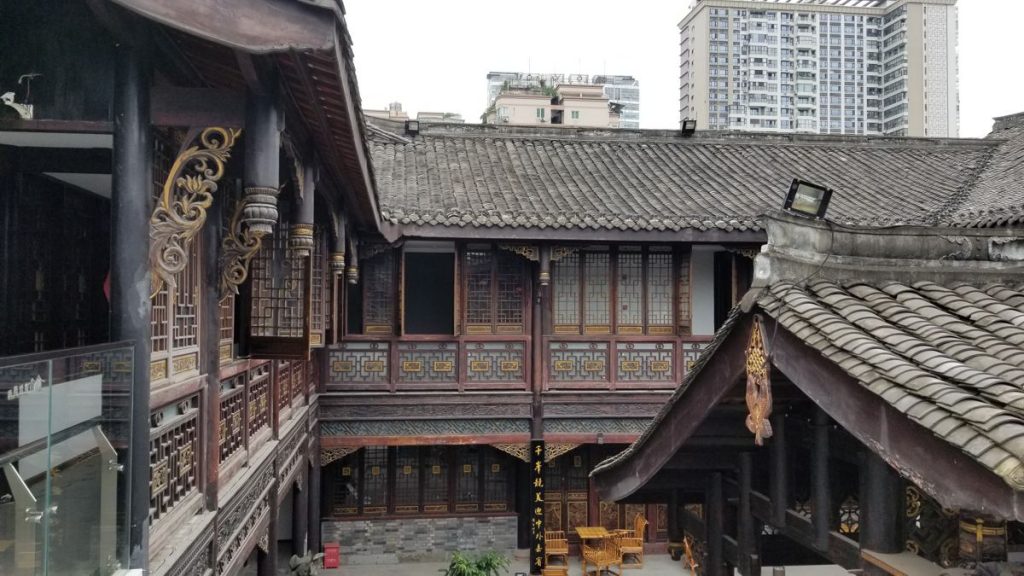
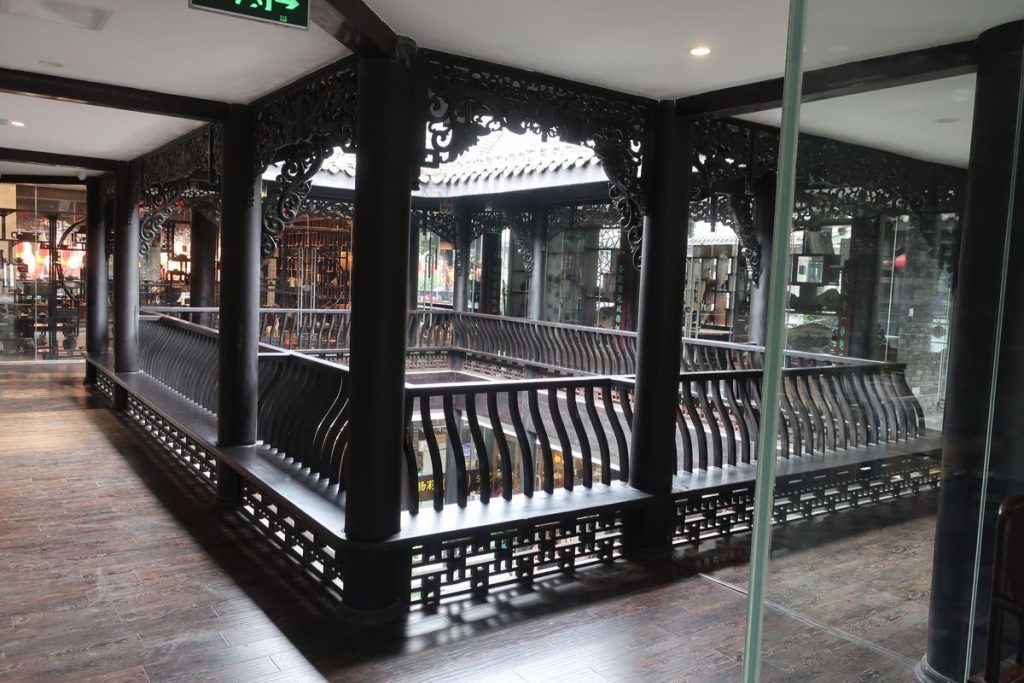
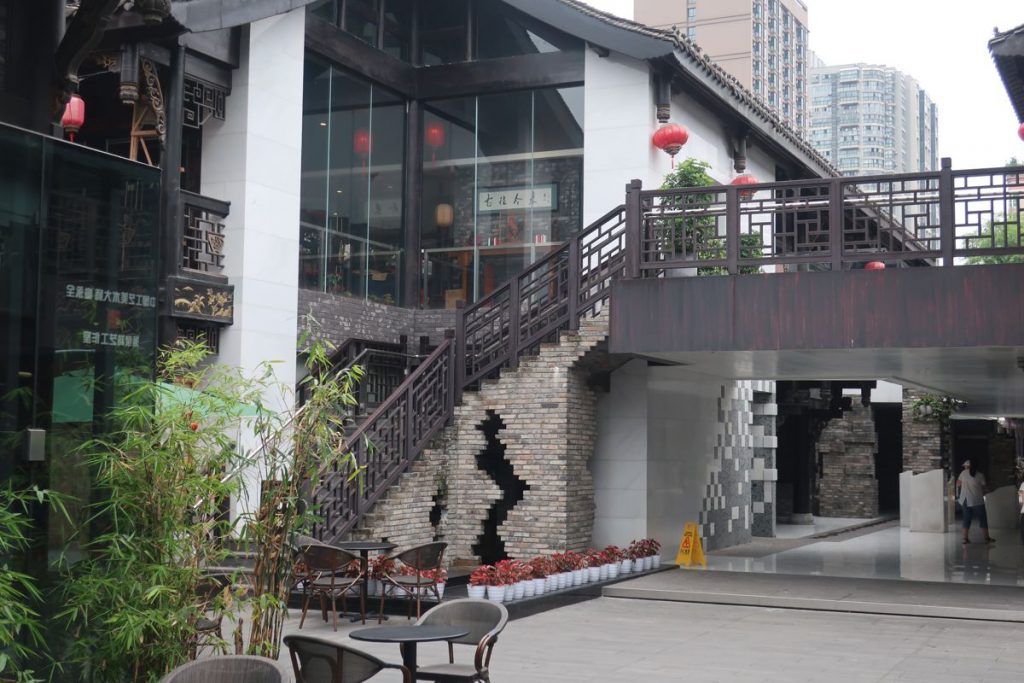
Jiu Yan Qiao 九眼橋
Literally the “nine-hole bridge”, Jiu Yan Qiao was a gorgeous bridge across the Jingjiang River in the middle of the city. The bridge was primarily known as the name of the waterfront nightlife district. Dozens of bars and barbecue outlets lined the south bank, across from the legendary distillery district Shui Jing Fang 水井坊. With two young children and a pair of elderly parents, we weren’t quite equipped to enjoy ourselves at such a nightlife hot spot. Thus we just made a stop here after dinner and appreciated the scenery at night.
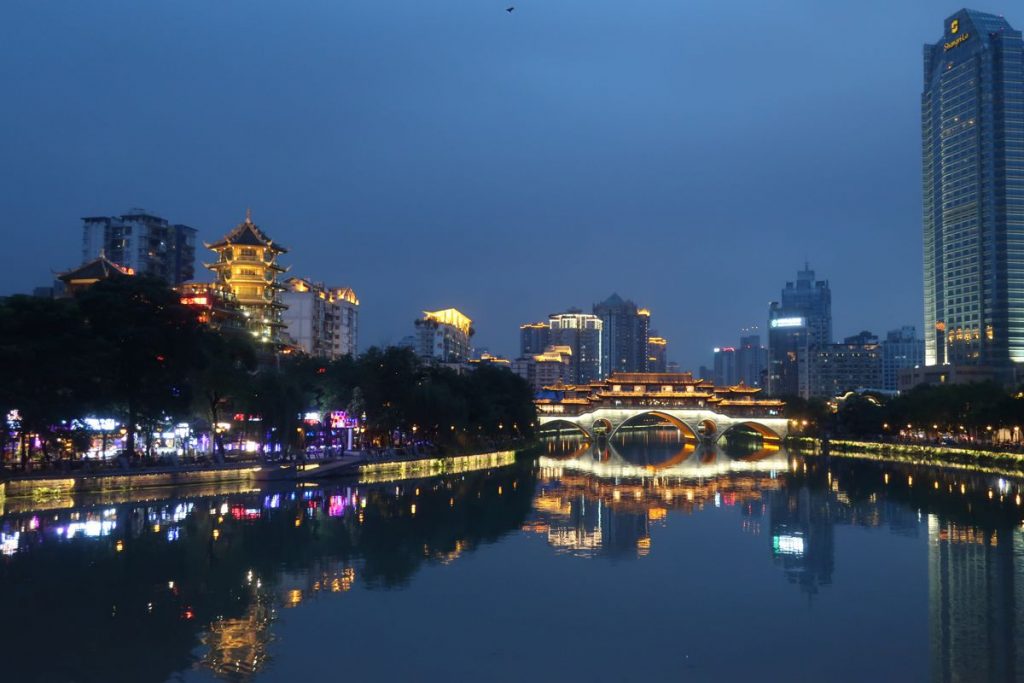
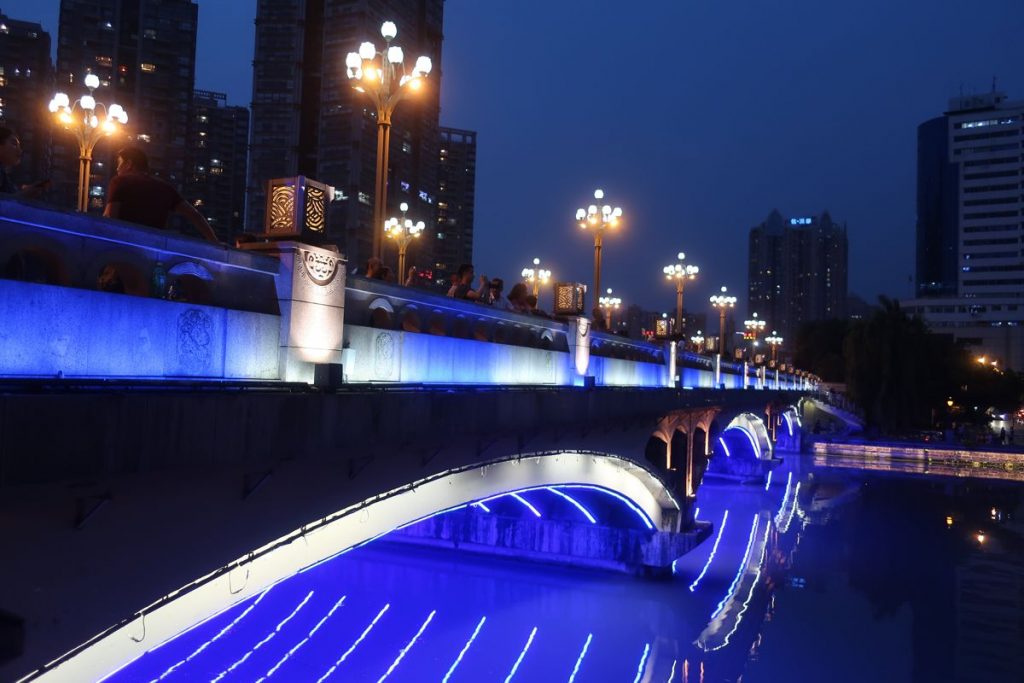
China 2019 index:
- Taking Kids Home
- Taipei
- Framily
- Yummy Taipei
- On To China
- Pandas & More
- Chengdu
- Chongqing
- Food in China
- Hanfu

China 2019 (9/10) – Food in China – Peter's Blog
October 25, 2020 at 3:28 am[…] Chengdu […]
China 2019 (10/10) – Hanfu – Peter's Blog
November 2, 2020 at 3:20 am[…] Chengdu […]